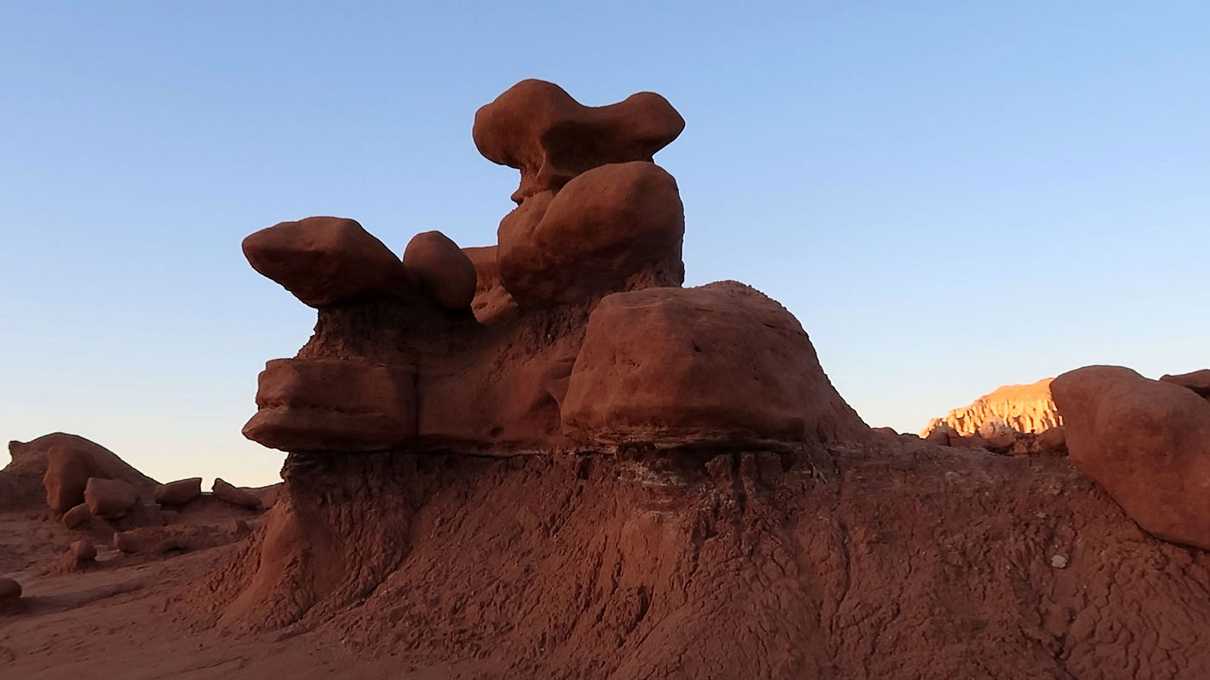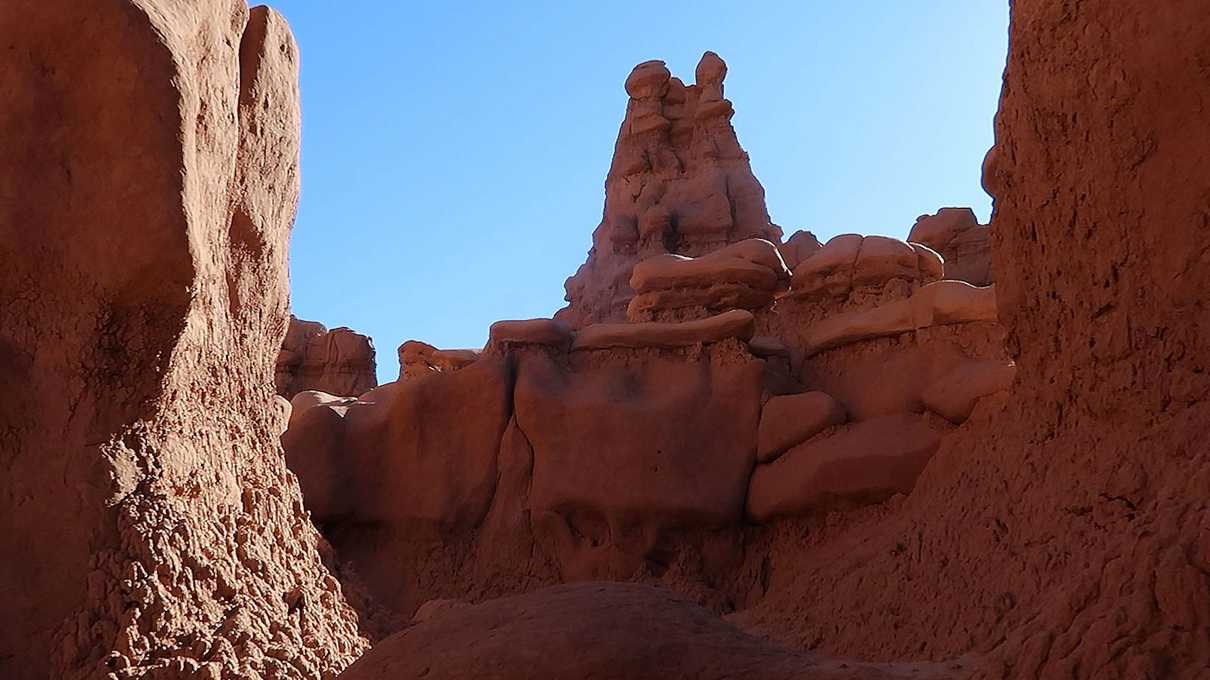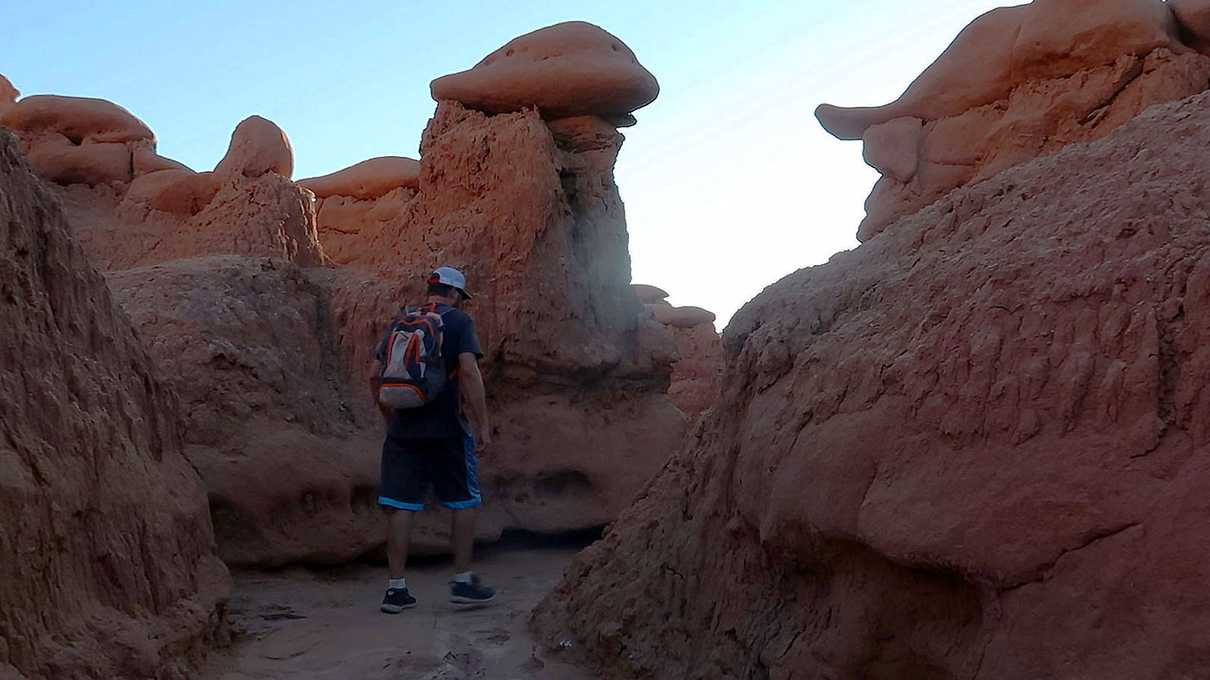The Fantastic and Surreal Landscape of Goblin Valley State Park
It could be argued that it may be peculiar to drive a minimum of 8 hours to visit a state park. However, the argument would not be valid unless the park in mind was known to be Goblin Valley State Park. This Utah state park is genuinely one of the more unique parks we’ve visited and certainly worthy of more than just state park status. Here the imagination can run wild creating all sorts of characters and structures in the mind’s eye out of the peculiar rock spires known as hoodoos - or “goblins” in this case.
Geology
The features in Goblin Valley State Park date back millions of years to the Jurassic period. This area, known as the San Rafael Swell, was once the shoreline of an ocean. The back and forth movement of the waves deposited sediment and sandstone which built up over time. As centuries and millennia passed, the ocean receded revealing new areas. Fast forward more millenia and this new area became susceptible to erosion and weathering.
The goblins in the park are made of harder rock sitting atop the softer sandstone. The sandstone layer slowly erodes over time by wind and water leaving the well-known mushroom shapes that are dotted all over the park.
Due to the delicate nature of the goblins, climbing on the hoodoos is prohibited.
History
Goblin Valley was occupied over time by numerous Native American cultures. Documented evidence can be seen across the San Rafael Swell through a number of pictograph panels. However, due to the remoteness of the area, it wasn’t until the 1920s that discovery of the area was documented. Arthur Chaffin, an early settler in the area, was seeking an alternate route between Green River and Caineville. He and two other companions looked out onto the valley and were stunned by what they saw.
Chaffin named this area Mushroom Valley and returned to it in 1949. For this visit he spent time exploring the area and photographing the hoodoo features and eroding cliffs. As one would expect, the photographs generated interest and visitors came flocking to view the goblins themselves. To protect the land from destruction and vandals the area was established as Goblin Valley State Reserve in 1954. Ten years later in 1964 Goblin Valley would join others in Utah as a state park.
Activities
Goblin Valley State Park has three valleys to walk through simply named Valley 1, Valley 2 and Valley 3. Visitors are free to roam the area as they want. Valley 1, closest to where one enters, contains a small sampling of modest sized goblins. Valley 2 boasts taller examples and a much more narrow canyon giving a completely different perspective. Finally, Valley 3 is the furthest valley often making it the least visited and perfect for those seeking seclusion.
Beyond the three valleys, there are six miles of hiking trails available including one that is called the Goblin's Lair - a slot canyon that has been sealed by rock fall on one end. A marked trail leads visitors to this feature. This hike is rated as strenuous as some scrambling up rocks and boulders is required.
Other popular trails include the Carmel Canyon Loop, Entrada Canyon and the Curtis Bench Trail.
One of the most famous and easily identifiable formations in Goblin Valley State Park is the Three Sisters - three iconic hoodoos standing next to one another out in the open near the park’s observation point.
Be sure to visit and spend time near sunset as the setting sun casts a glow on the sandstone making them glow a deep red color.


